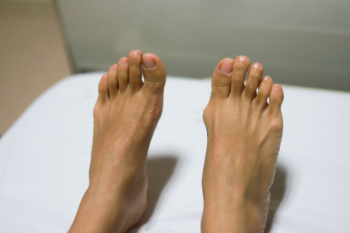
Early signs of bunion formation often begin subtly, with symptoms such as redness, swelling, and tenderness surronding the base of the big toe. As the bunion progresses, the big toe may start to lean toward the other toes, creating a visible bump on the side of the foot. Over time, you might also notice thickened skin or calluses developing due to the increased pressure on the affected area. Simple adjustments like avoiding wearing ill-fitting shoes and high heels, while opting for wide, comfortable, soft-soled shoes, can help to manage symptoms. A podiatrist may recommend placing spacers between the toes to prevent rubbing, covering the bunion with pads, and stretching calf muscles to improve joint alignment. This foot doctor also may prescribe orthotic devices to slow the progression of the bunion and improve your foot health. If you believe a bunion is forming on your toe, it is suggested that you schedule an appointment with a podiatrist for an evaluation and proactive treatment options.
If you are suffering from bunions, contact Bruce Smit, DPM of Frankfort Foot & Ankle Clinic. Our doctor can provide the care you need to keep you pain-free and on your feet.
What Is a Bunion?
A bunion is formed of swollen tissue or an enlargement of boney growth, usually located at the base joint of the toe that connects to the foot. The swelling occurs due to the bones in the big toe shifting inward, which impacts the other toes of the foot. This causes the area around the base of the big toe to become inflamed and painful.
Why Do Bunions Form?
Genetics – Susceptibility to bunions are often hereditary
Stress on the feet – Poorly fitted and uncomfortable footwear that places stress on feet, such as heels, can worsen existing bunions
How Are Bunions Diagnosed?
Doctors often perform two tests – blood tests and x-rays – when trying to diagnose bunions, especially in the early stages of development. Blood tests help determine if the foot pain is being caused by something else, such as arthritis, while x-rays provide a clear picture of your bone structure to your doctor.
How Are Bunions Treated?
If you have any questions, please feel free to contact our office located in Frankfort, IL . We offer the newest diagnostic and treatment technologies for all your foot care needs.